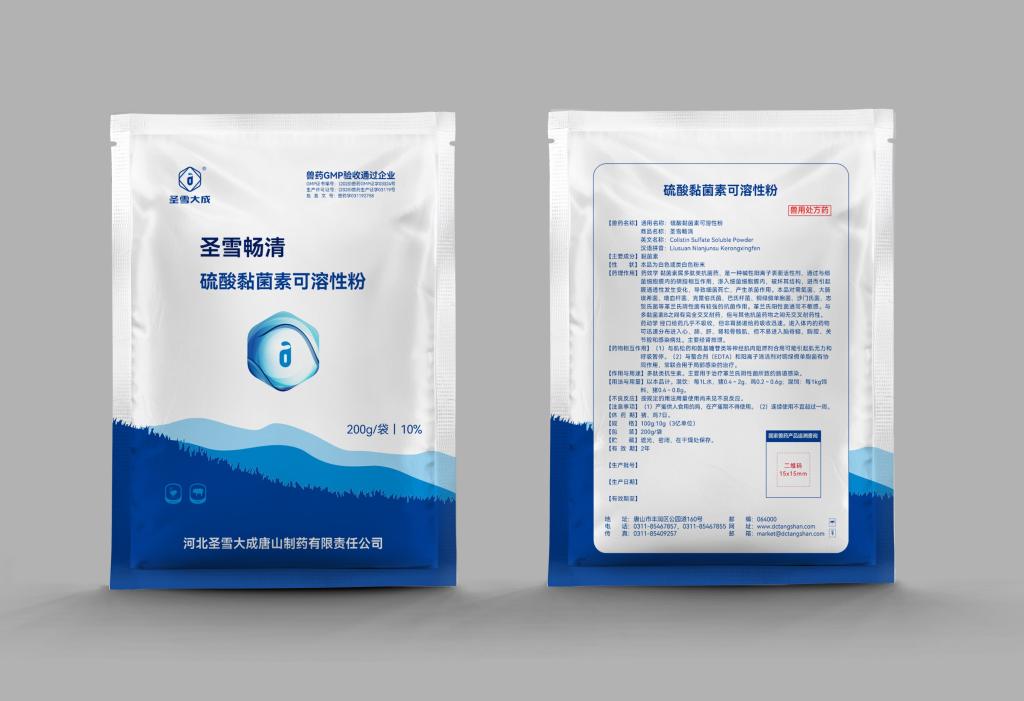Tel:0086 18231198596

News
Adapting to Change: Colistin Sulfate Soluble Powder in Evolving Veterinary Practices.
TIME:2024-01-11
1. Introduction:
Veterinary practices are undergoing unprecedented change, influenced by advancements in technology, increased awareness of antibiotic resistance, and a growing emphasis on sustainability. At the heart of this evolution lies colistin sulfate soluble powder, a key antibiotic in veterinary medicine. This article explores the dynamics of adapting to change in veterinary practices, with a focus on the historical context of colistin sulfate, contemporary challenges, emerging alternatives, and the transformative role of technology.
2. Historical Significance of Colistin Sulfate:
Discovery and Early Use:
Colistin, discovered in the 1950s, quickly became a cornerstone in combating Gram-negative bacterial infections in both human and veterinary medicine. Its efficacy against multidrug-resistant bacteria positioned it as a last-resort antibiotic, especially in veterinary practices where bacterial infections in livestock demanded effective treatment.
Traditional Veterinary Applications:
Colistin sulfate soluble powder found widespread use in traditional veterinary applications, serving as a reliable tool for treating respiratory and gastrointestinal infections in various animal species. Its inclusion in veterinary medicine protocols underscored its importance in safeguarding animal health and ensuring the productivity of farms.
3. Current Challenges in Colistin Sulfate Use:
Antibiotic Resistance Concerns:
The overuse and misuse of antibiotics, including colistin sulfate, have led to the emergence of antibiotic-resistant strains of bacteria. This poses a significant threat to both animal and human health, prompting a reevaluation of veterinary practices to address these concerns and mitigate the risk of further resistance development.
Regulatory Scrutiny and Compliance Measures:
Stringent regulatory measures, such as withdrawal periods and residue testing, aim to ensure the responsible use of colistin sulfate in veterinary practices. Compliance with these measures is essential to prevent antibiotic residues in food products derived from treated animals and maintain food safety standards.
4. Emerging Alternatives and Innovations:
Exploration of Antibiotic Alternatives:
The evolving landscape of veterinary practices involves a shift towards exploring alternatives to traditional antibiotics. Researchers are investigating innovative approaches, including phytogenic compounds, probiotics, and bacteriophages, to reduce reliance on colistin sulfate and address the challenges associated with antibiotic resistance.
Precision Medicine in Veterinary Care:
Advancements in precision medicine allow veterinarians to tailor treatments based on individual animal characteristics, genetics, and microbial profiles. This personalized approach enhances the effectiveness of treatments while minimizing the use of broad-spectrum antibiotics like colistin sulfate, contributing to more sustainable veterinary practices.
5. Technology's Role in Transforming Veterinary Practices:
Telemedicine and Remote Monitoring:
Technology, particularly telemedicine, has revolutionized veterinary care. Remote consultations, diagnostic tools, and real-time monitoring enable veterinarians to provide effective care without the need for physical presence. This not only improves accessibility to veterinary services but also enhances the efficiency of treatment protocols.
Data Analytics and Predictive Modeling:
The use of data analytics and predictive modeling allows veterinarians to analyze trends in disease prevalence, antibiotic usage, and treatment outcomes. This information empowers veterinary professionals to make informed decisions, implement preventive measures, and optimize treatment regimens, contributing to more proactive and sustainable practices.
6. Sustainable Practices in Veterinary Medicine:
One Health Approach:
The One Health approach emphasizes the interconnectedness of human, animal, and environmental health. In veterinary practices, adopting a One Health perspective involves considering the broader impact of treatment decisions on antibiotic resistance, animal welfare, and the overall ecosystem.
Sustainable Farming and Animal Husbandry:
Veterinary practices are increasingly aligning with sustainable farming and animal husbandry principles. This involves implementing practices that prioritize animal welfare, reduce stressors contributing to infections, and promote the overall health of animals, thereby minimizing the need for extensive antibiotic interventions.
7. Education and Professional Development:
Continuous education and professional development are crucial components of adapting to change in veterinary practices. Veterinarians, veterinary technicians, and other professionals must stay abreast of the latest advancements, emerging alternatives, and evolving best practices to provide the highest standard of care while minimizing the environmental impact of veterinary interventions.
8. Collaboration and Industry Partnerships:
Adapting to change in veterinary practices requires collaboration among stakeholders. Veterinarians, farmers, regulatory bodies, pharmaceutical companies, and researchers must work collaboratively to share knowledge, implement best practices, and drive innovation in veterinary medicine.
9. Ethical Considerations in Veterinary Practices:
As veterinary practices evolve, ethical considerations become paramount. Ethical decision-making involves weighing the benefits of treatment against potential risks, considering the welfare of animals, and prioritizing practices that align with broader societal values, including sustainability and responsible antibiotic use.
10. Conclusion:
In conclusion, the adaptation to change in veterinary practices, particularly in the use of colistin sulfate soluble powder, is essential for ensuring the well-being of animals, addressing antibiotic resistance concerns, and promoting sustainable practices. From historical significance to emerging alternatives and the transformative role of technology, the veterinary landscape is undergoing a profound shift. The integration of ethical considerations, ongoing education, and collaborative efforts will be pivotal in shaping the future of veterinary medicine and ensuring the continued health of animals and the ecosystems they inhabit.

 CONTACT
CONTACT




